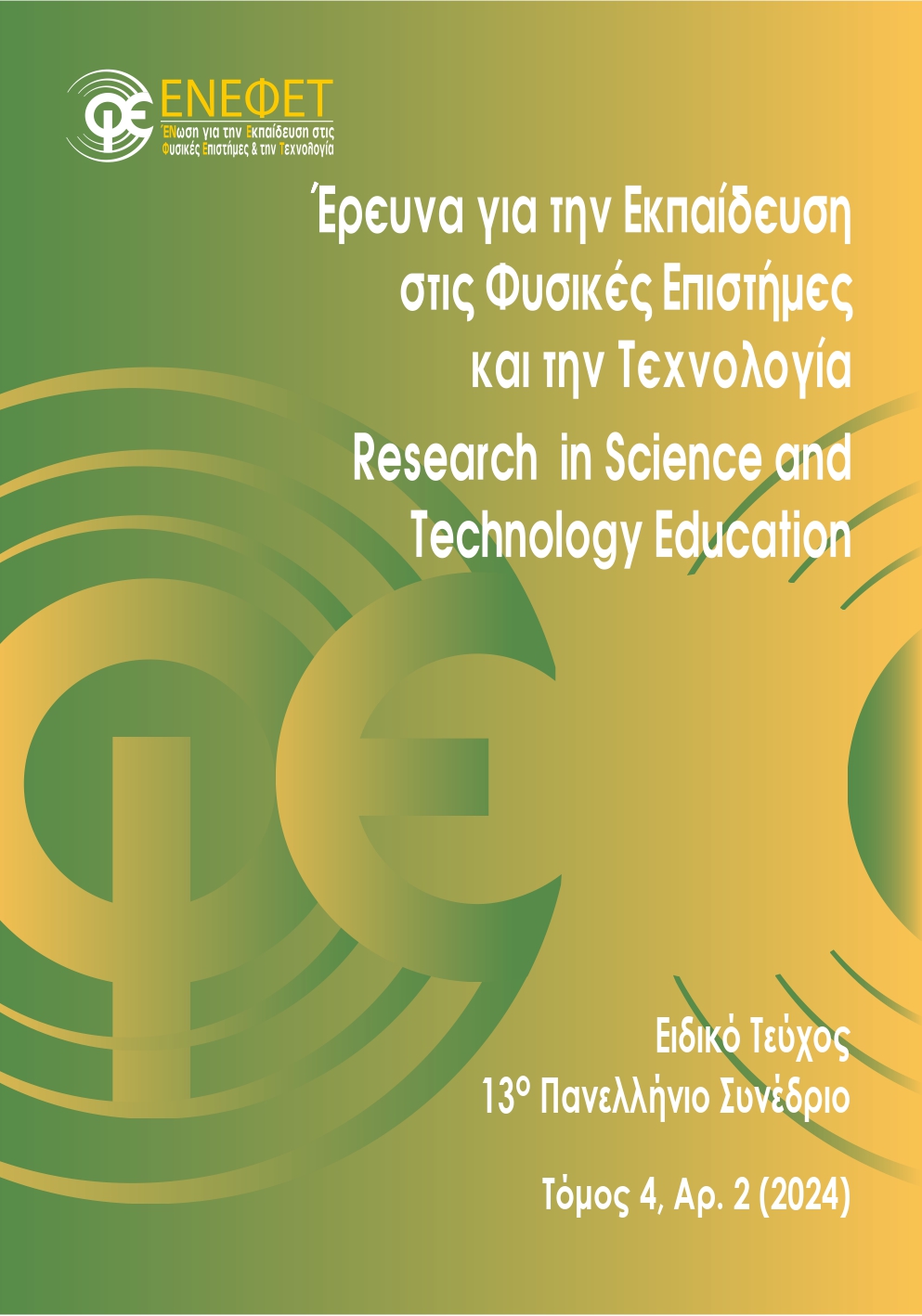Ανάπτυξη και Πιλοτική Εφαρμογή Εργαλείου Μέτρησης Επιστημονικού Εγγραμματισμού Μαθητών Δημοτικού
Abstract
Η παρούσα εργασία παρουσιάζει μέρος της μεθοδολογίας και των διαδικασιών εγκυροποίησης ενός εργαλείου μέτρησης επιστημονικού εγγραμματισμού μαθητών/τριών της τελευταίας τάξης του Δημοτικού Σχολείου και την προοπτική ανίχνευσης επίπεδων επιστημονικού εγγραμματισμού τους. Στη πιλοτική έρευνα, τα προκαταρκτικά αποτελέσματα της οποίας δημοσιεύουμε, συμμετείχε δείγμα 260 μαθητών/τριών, που απάντησε σε ειδικά διαμορφωμένο ηλεκτρονικό ερωτηματολόγιο. Τα αποτελέσματα των διαδικασιών εγκυροποίησης κατοχυρώνουν τη φαινομενική εγκυρότητα και την εγκυρότητα περιεχομένου και κατατάσσουν τους μαθητές/τριες σε τρία διαφορετικά επίπεδα επιστημονικού εγγραμματισμού (χαμηλό, μεσαίο, υψηλό).
Article Details
- How to Cite
-
ΣΑΡΓΙΩΤΗ Α., & Εμβαλωτής Α. (2024). Ανάπτυξη και Πιλοτική Εφαρμογή Εργαλείου Μέτρησης Επιστημονικού Εγγραμματισμού Μαθητών Δημοτικού. Research in Science & Technology Education, 4(2), 205–225. https://doi.org/10.12681/riste.38070
- Section
- Research Article
Authors retain copyright and grant the journal right of first publication with the work simultaneously licensed under a CC-BY-NC-SA that allows others to share the work with an acknowledgement of the work's authorship and initial publication in this journal.



